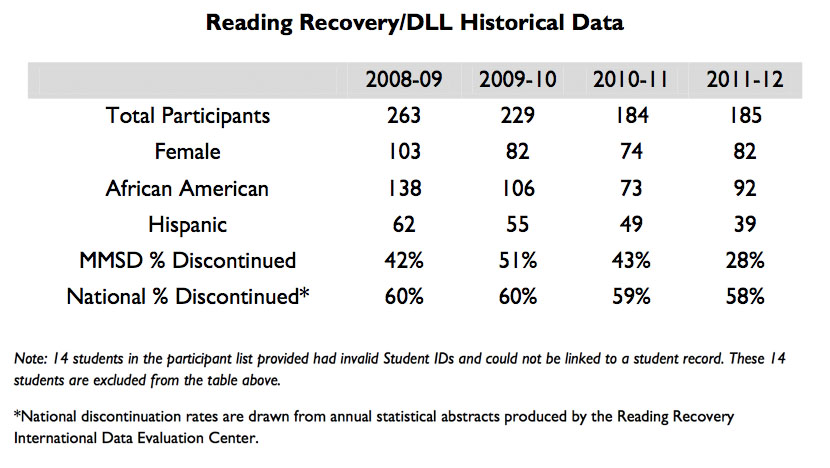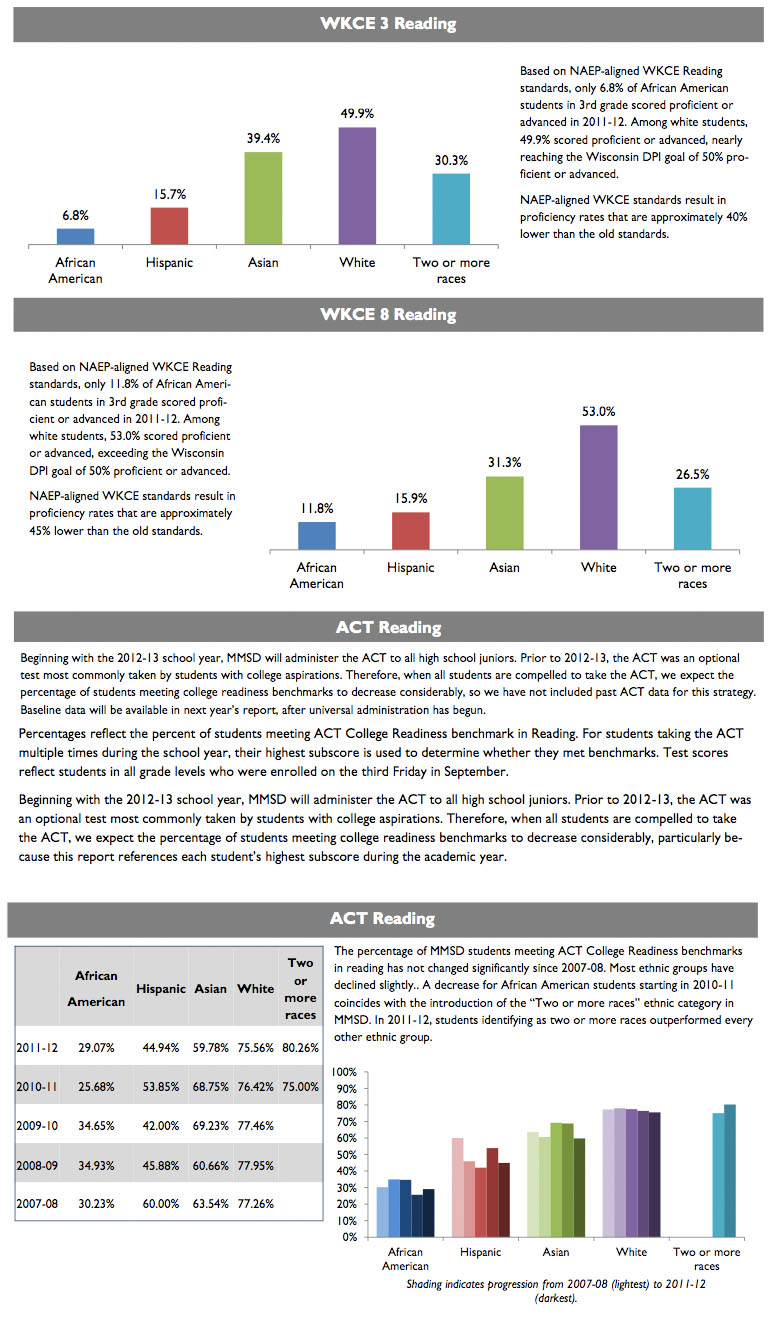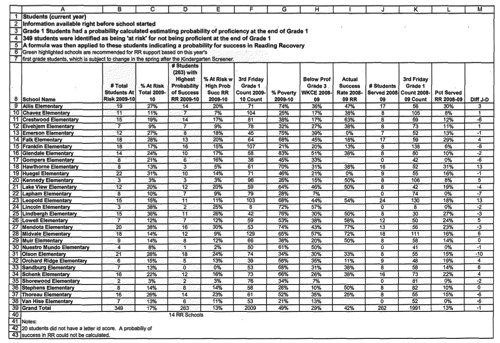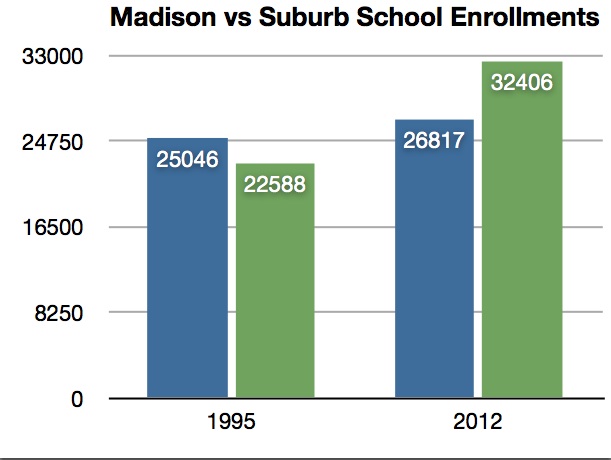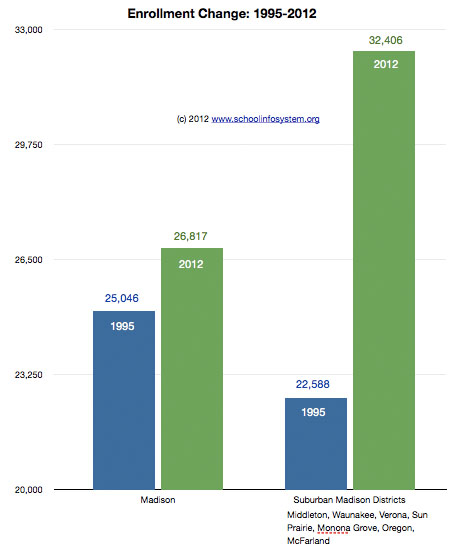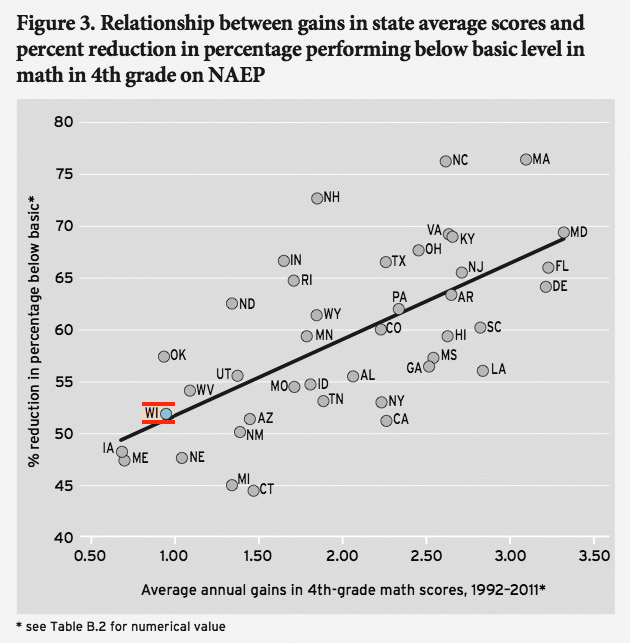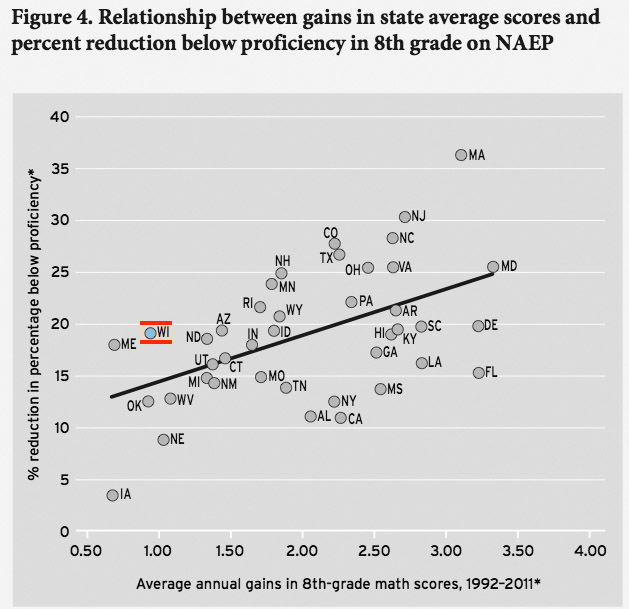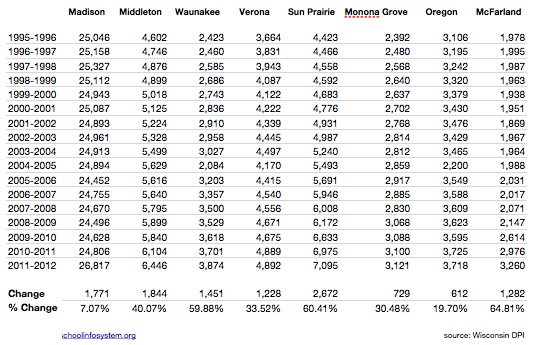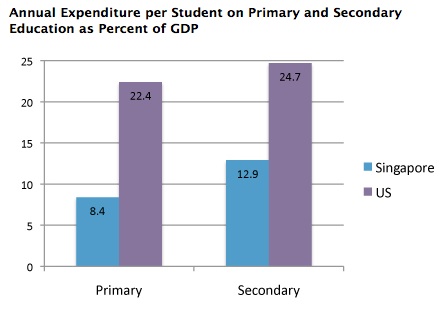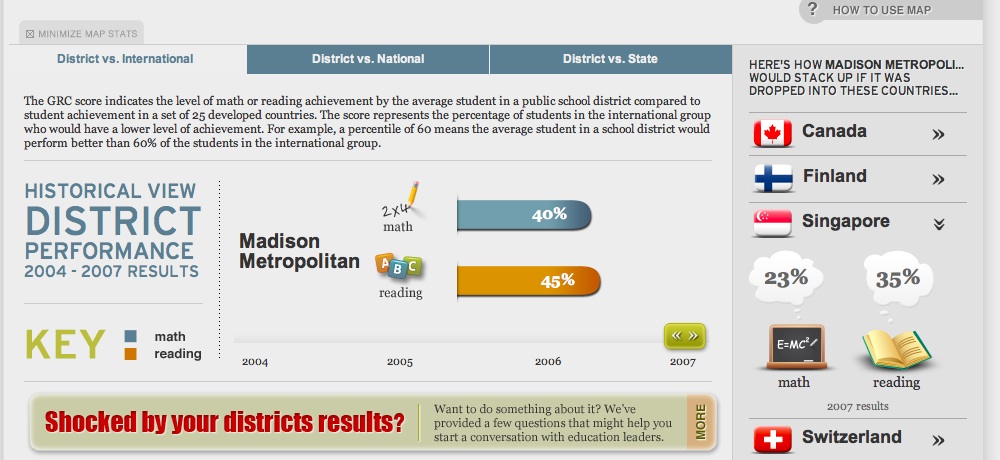Jack Craver:
The city, he says, needs to help by providing kids with access to out-of-school programs in the evenings and during the summer. It needs to do more to fight hunger and address violence-induced trauma in children. And it needs to help parents get engaged in their kids’ education.
“We as a community, for all of the bragging about being so progressive, are way behind the rest of the nation in these areas,” he says.
The mayor’s stated plans for addressing those issues, however, are in their infancy.
Soglin says he is researching ways to get low-cost Internet access to the many households throughout the city that currently lack computers or broadband connections.
A serious effort to provide low-cost or even free Internet access to city residents is hampered by a 2003 state law that sought to discourage cities from setting up their own broadband networks. The bill, which was pushed by the telecommunications industry, forbids municipalities from funding a broadband system with taxpayer dollars; only subscriber fees can be used.
Ald. Scott Resnick, who runs a software company and plans to be involved in Soglin’s efforts, says the city will likely look to broker a deal with existing Internet providers, such as Charter or AT&T, and perhaps seek funding from private donors.
Related: “We are not interested in the development of new charter schools” – Madison Mayor Paul Soglin.
Job one locally is to make sure all students can read.
Madison, 2004 Madison schools distort reading data by UW-Madison Professor Mark Seidenberg:
Rainwater’s explanation also emphasized the fact that 80 percent of Madison children score at or above grade level. But the funds were targeted for students who do not score at these levels. Current practices are clearly not working for these children, and the Reading First funds would have supported activities designed to help them.
Madison’s reading curriculum undoubtedly works well in many settings. For whatever reasons, many chil dren at the five targeted schools had fallen seriously behind. It is not an indictment of the district to acknowledge that these children might have benefited from additional resources and intervention strategies.
In her column, Belmore also emphasized the 80 percent of the children who are doing well, but she provided additional statistics indicating that test scores are improving at the five target schools. Thus she argued that the best thing is to stick with the current program rather than use the Reading First money.
Belmore has provided a lesson in the selective use of statistics. It’s true that third grade reading scores improved at the schools between 1998 and 2004. However, at Hawthorne, scores have been flat (not improving) since 2000; at Glendale, flat since 2001; at Midvale/ Lincoln, flat since 2002; and at Orchard Ridge they have improved since 2002 – bringing them back to slightly higher than where they were in 2001.
In short, these schools are not making steady upward progress, at least as measured by this test.
Madison, 2005: When all third graders read at grade level or beyond by the end of the year, the achievement gap will be closed…and not before by Ruth Robarts:
According to Mr. Rainwater, the place to look for evidence of a closing achievement gap is the comparison of the percentage of African American third graders who score at the lowest level of performance on statewide tests and the percentage of other racial groups scoring at that level. He says that, after accounting for income differences, there is no gap associated with race at the lowest level of achievement in reading. He made the same claim last year, telling the Wisconsin State Journal on September 24, 2004, “for those kids for whom an ability to read would prevent them from being successful, we’ve reduced that percentage very substantially, and basically, for all practical purposes, closed the gap”. Last Monday, he stated that the gap between percentages scoring at the lowest level “is the original gap” that the board set out to close.
Unfortunately, that is not the achievement gap that the board aimed to close.
In 1998, the Madison School Board adopted an important academic goal: “that all students complete the 3rd grade able to read at or beyond grade level”. We adopted this goal in response to recommendations from a citizen study group that believed that minority students who are not competent as readers by the end of the third grade fall behind in all academic areas after third grade.
“All students” meant all students. We promised to stop thinking in terms of average student achievement in reading. Instead, we would separately analyze the reading ability of students by subgroups. The subgroups included white, African American, Hispanic, Southeast Asian, and other Asian students.
“Able to read at or beyond grade level” meant scoring at the “proficient” or “advanced” level on the Wisconsin Reading Comprehension Test (WRC) administered during the third grade. “Proficient” scores were equated with being able to read at grade level. “Advanced” scores were equated with being able to read beyond grade level. The other possible scores on this statewide test (basic and minimal) were equated with reading below grade level.
Madison, 2009: 60% to 42%: Madison School District’s Reading Recovery Effectiveness Lags “National Average”: Administration seeks to continue its use.
Madison, 2012: Madison’s “Achievement Gap Plan”:
The other useful stat buried in the materials is on the second page 3 (= 6th page), showing that the 3rd grade proficiency rate for black students on WKCE, converted to NAEP-scale proficiency, is 6.8%, with the accountability plan targeting this percentage to increase to 23% over one school year. Not sure how this happens when the proficiency rate (by any measure) has been decreasing year over year for quite some time. Because the new DPI school report cards don’t present data on an aggregated basis district-wide nor disaggregated by income and ethnicity by grade level, the stats in the MMSD report are very useful, if one reads the fine print.
